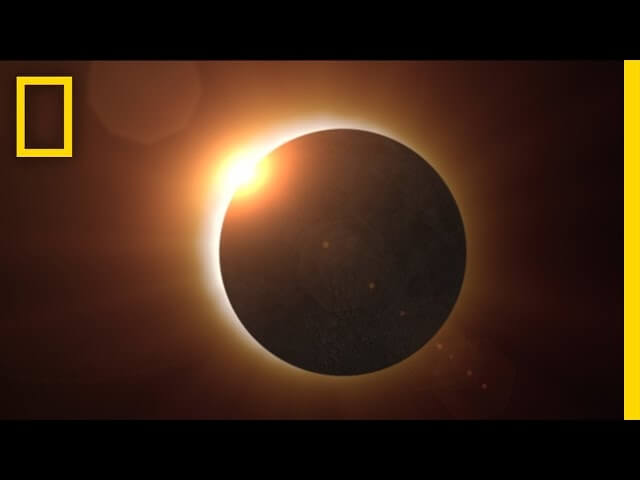Nat Geo explains the science behind solar eclipses, why you should care

This Monday will mark the first time in almost 40 years that a full solar eclipse has been visible in the mainland United States. From Portland, Oregon to the South Carolina coast, people all along the path of the eclipse will be standing out on their front lawns with their faces turned upwards, experiencing this rare astronomical phenomenon together. But what exactly will they be looking at? And, perhaps more importantly, how the hell does any of this work?
As with most scientific questions, National Geographic has your back. In a new primer video, “Solar Eclipse 101,” the folks at Nat Geo break down the simple science behind eclipses, explain why total eclipses are so rare, and offer some tips on how to stay safe during your viewing experience.
First thing to know when viewing an eclipse is whether you’re standing within the smaller umbral shadow or the larger penumbral shadow. A total eclipse— when the moon crosses in front of the sun, covering it completely —is only visible within the the umbral shadow. Watch from anywhere else, and you’ll only be seeing a partial eclipse, which is still cool, but not as cool as it could be. Due to the moon’s slightly tilted orbit, a total solar eclipse occurs at some random point on Earth about every year or two. But any individual location will only experience a total eclipse once every 400 years, which is what makes this coming Monday such a special occasion.
Also, if you’re planning on viewing the eclipse, don’t be an idiot about it. Staring at the sun is just as dangerous as everyone’s mom says it is, so be sure to wear special eclipse-viewing sunglasses or prepare your own pinhole viewer beforehand. That way you can experience this once (or twice) in a lifetime event without making it the last thing you ever see. Lastly, if you’d like to get an even better idea of what to expect, take a look at the ABC news broadcast from the last time this happened, on February 26, 1979. At the end of this special report, newscaster Frank Reynolds looks forward to the next century and next total eclipse over the United States with the tragically optimistic wish, “May the shadow of the moon fall on a world at peace.”